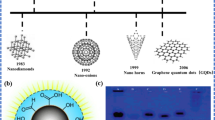Abstract
The microbial activity of different microorganisms was determined by means of an electrochemical bioactivity sensor (BAS). The BAS is based on a biofuel cell and was used for analytical purposes. Online determination of microbial activity using the BAS demonstrated that when different microorganisms with different metabolic pathways were cultivated, a distinct activity signal was detectable with all organisms applied. Furthermore, the results permitted a quantitative comparison of the BAS signals. Among other findings it was shown that the quotient of the BAS signal and the utilized glucose varied from 0.16–29.08 mV g−1, the quotient of the maximum BAS signal and the released energy of the reaction exhibited a lower variation of 0.07–0.19 mV kJ−1. Furthermore it was demonstrated that the highest BAS signals could be measured during anaerobic E. coli fermentations, the reason being the formation of electroactive fermentation products, such as formic acid and H2.
Similar content being viewed by others
References
Bennetto HP, Stirling JL, Tanaka K, Vega CA (1983) Anodic reactions in microbial fuel cells. Biotechnol Bioeng 25:559–568
Bennettto HP, Box J, Delaney GM, Mason JM, Roller SD (1987) Redox-mediated electrochemistry of whole microorganisms: from fuel cells to biosensors. In: Turner APF, Karube I, Wilson GS (eds) Biosensors. Oxford University Press, Oxford, pp 291–314
Holtmann D, Sell D (2002) Detection of the microbial activity of aerobic heterotrophic, anoxic heterotrophic and aerobic autotrophic activated sludge organisms with an electrochemical sensor. Biotechnol Lett 24:1313–1318
Tansiho S, Kamiya N, Wakao N (1989) Microbial fuel cell using Enterobacter aerogenes. Bioelectrochem Bioener 21:25–32
Karube I, Matsunaga T, Mitsuda S, Suzuki S (1977) Microbial electrode BOD sensors. Biotechnol Bioeng 19:1535–1547
Katz E, Shipway AN, Willner I (2003) Biochemical fuel cells. In: Vilstich W, Gasteiger H, Lamm A (eds) Handbook of fuel cells – fundamentals, technology, applications, vol 1. Wiley-VCH, Weinheim, pp 355–381
Kreysa G, Sell D, Krämer P (1990) Bioelectrochemical fuel cells. Ber Bunsenges Phys Chem 94:1042–1045
Matsunaga T, Karube I, Suzuki S (1980) Electrochemical determination of cell populations. Appl Microbiol Biotechnol 10:125–132
Miyabyashi A, Danielsson B, Mattiason B (1987) Development of a flow-cell system with dual fuel cell electrodes for continuous monitoring of microbial populations. Biotechnol Tech 1:219–224
Onken U, Jostmann T (1984) Influence of pressure of growth of Pseudomonas fluorescens. Biotechnol Lett 6:413–418
Patchett RA, Kelly AF, Kroll RG (1988) Use of a microbial fuel cell for the rapid enumeration of bacteria. Appl Microbiol Biotechnol 28:26–31
Rawson DM, Willmer AJ, Turner APF (1989) Whole-cell biosensors for environmental monitoring. Biosensors 4:299–311
Scheller FW, Schubert F, Renneberg R, Müller H-G, Jaenchen M, Weise H (1985) Biosensors: trends and commercialization. Biosensors 1(2):135–160
Sell D (2001) Bioelectrochemical fuel cells. In: Rehm HJ, Reed G, Pühler A, Stadler P (eds) Biotechnology, special processes, vol 10. Wiley-VCH, Weinheim, pp 5–23
Zhang X-C, Halme A (1995) Modelling of a microbial fuel cell process. Biotechnol Lett 17:809–814
Zhang X-C, Halme A (1994) A summary of the study of bioelectrochemical fuel cell by using Saccharomyces cerevisiae. In: Halme A, Selkäinaho J, Orava J (eds) Research reports of automation technology, vol 10. Laboratory of Helsinki University of Technology, pp 1–10
Acknowledgement
This research (AiF FV No. 13112 N) was made possible by funding from the German Ministry of Economics and Labour (BMWA) granted by Arbeitsgemeinschaft industrieller Forschungseinrichtungen “Otto von Guericke e.V. (AiF).
Author information
Authors and Affiliations
Corresponding author
Rights and permissions
About this article
Cite this article
Holtmann, D., Schrader, J. & Sell, D. Quantitative Comparison of the Signals of an Electrochemical Bioactivity Sensor During the Cultivation of Different Microorganisms. Biotechnol Lett 28, 889–896 (2006). https://doi.org/10.1007/s10529-006-9021-y
Received:
Accepted:
Published:
Issue Date:
DOI: https://doi.org/10.1007/s10529-006-9021-y




